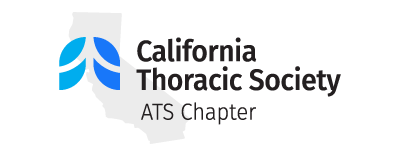ABOUT THE PROFICIENCY TESTING COMMITTEE
History: Proficiency Testing Program
Congress passed the Clinical Laboratory Improvement Act in 1967 but its provisions applied only to large independent laboratories engaged in interstate commerce. Until the enactment of CLIA ’88 (Clinical Laboratory Improvement Amendments), whose regulations became effective in 1992, proficiency testing was voluntary for most hospital and office-based blood gas laboratories.
The blood gas proficiency testing program was set up by CTS in 1982, in collaboration with Instrumentation Laboratories (IL). The program was well received in California and in 1985 we expanded it to a joint program with American Thoracic Society (ATS). The combined program continued to grow and flourish until 1999 when IL informed us that they would no longer provide us with test material and grading of results and the ATS decided to discontinue their participation. Despite those setbacks, CTS elected to continue the program with the support of several ATS laboratories outside of California. CTS would then move from IL and changed to the Wisconsin State Laboratory of Hygiene (WSLH), with which we have had an excellent relationship since 2002.
In order to serve our members’ needs for assessment of the performance of their blood gas laboratories, the California Thoracic Society created the Blood Gas Laboratory Proficiency Testing Committee. The purpose of this committee is to establish and maintain a proficiency testing service.
What is Proficiency Testing?
Blood gas laboratory proficiency testing is accomplished by sending “unknown” samples, prepared to test an appropriate clinical range of values. The laboratory analyzes these unknown samples and reports back their findings. The findings from all of the laboratories are combined and grouped according to analyte and instrument. The performance is assessed statistically and then reported back to the laboratory. The Clinical Laboratory Amendments of 1988 mandated the participation of blood gas laboratories in proficiency testing programs. It also established a reporting mechanism for performance below 80% acceptability for specific analytes, including pH, pCO2 and pCO2. Accreditation of blood gas laboratories examines the performance of proficiency testing and the documentation of the resolution of any problems encountered.
How the CTS PT Program is Unique
One of the unique features of our program is having reference technicians available to assist the laboratory when questions arise. Some examples of the issues that the reference technicians are contacted about are: how to document the assessment and resolution of failed or questionable proficiency testing results, if the grouping applied to a particular lab was appropriate; how to qualify and document the installation of a new blood gas instrument; and how to meet regulatory requirements for linearity testing and the establishment of analytical ranges. Our reference technicians are eager to assist you in meeting the needs of your laboratory.
COMMITEE MEMBERS
Arthur D. Dawson, MD | Co-Chair
Scripps Clinic, La Jolla, CA
William W. Stringer, MD | Co-Chair
Harbor- UCLA Medical Center, Torrance, CA
_______
David Park, MD, PhD
Good Samaritan Hospital
Los Angeles, CA
Karl Van Gundy, MD, FCCP
UC San Francisco - Fresno
Fresno, CA
PT REFERENCE TECHNICIAN
Michael Muth, RCP, RRT, MBA
Good Samaritan Hospital
Los Angeles, CA
Michael H. Terry, RCP, RRT
Loma Linda Medical Center
Loma Linda, CA




